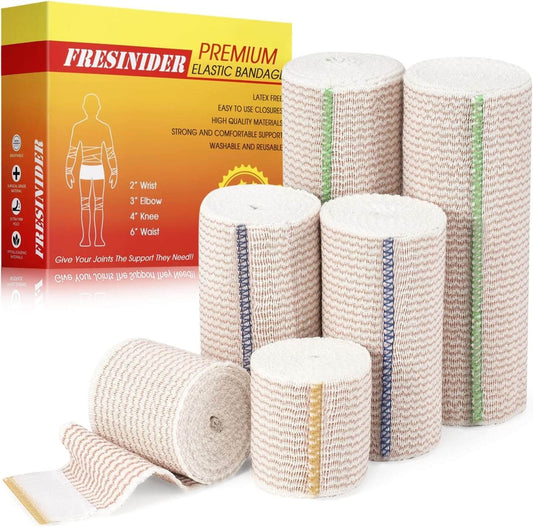Paper surgical tape is a lightweight, breathable medical tape designed for gentle, everyday fixation—especially for sensitive or fragile skin. It typically uses a microporous paper backing with a low-trauma, latex-free acrylic adhesive. Compared with cloth or silk tapes, paper tape prioritizes skin friendliness and clean removal over heavy-duty hold.
What It’s Made Of
- Backing: nonwoven or crepe paper with micro-pores for airflow.
- Adhesive: medical-grade acrylic pressure-sensitive adhesive (PSA), typically hypoallergenic & latex-free.
- Fresinider format: 1" × 10yd per roll, 12 rolls per box.
When to Use Paper Tape
- Sensitive & fragile skin: Preferred for delicate or at-risk skin thanks to its hypoallergenic, non-irritating adhesive.
- Frequent dressing changes: Gentle adhesion allows repeat removal/reapplication without damaging periwound skin.
- Post-surgical care: Securely holds gauze or light dressings over incisions while minimizing skin trauma.
- Securing medical devices: Useful for light fixation of tubing and small devices (e.g., IV lines, catheters, sensors).
- Allergy-prone individuals: Latex-free, skin-friendly option for people sensitive to conventional adhesives.
- General first aid: A staple for kits—fast, gentle fixation for minor cuts, scrapes, or burns.
Limitations: not waterproof and not for high-tension joints; choose a transparent film dressing for shower protection, or a stronger tape such as silicone medical tape when more hold is required.

FRESINIDER Soft Paper Surgical Tape
1" × 10yd · 12 rolls/box
- Gentle on skin — hypoallergenic, latex-free adhesive.
- Breathable & comfortable — microporous paper.
- Easy to use — hand-tear for quick sizing.
- Best for light securement — gauze & light dressings.
How Paper Tape Works
- Breathable backing: Microporous paper lets sweat and vapor escape to help prevent skin maceration.
- Low-trauma adhesive: Medical-grade acrylic holds light dressings but peels off cleanly to reduce skin stripping.
- Conformable & easy to use: Thin paper flexes with skin and tears by hand for quick sizing.
- Best practice: Apply to clean, dry skin and press 10–30 s; remove low-and-slow, back over itself.
Limitations: not waterproof and not for high-tension joints—use a transparent film or stronger tape for those needs.

Paper Tape vs. Other Tapes
| Use Case / Feature | Paper Tape | Silicone Tape | Silk/Cloth Tape | Transparent Film (TPU) |
|---|---|---|---|---|
| Skin kindness | ★★★★☆ (gentle) | ★★★★★ (gentlest) | ★★☆☆☆ | ★★★☆☆ |
| Hold strength | ★★☆☆☆ (light) | ★★☆☆☆–★★★☆☆ | ★★★★☆ | ★★★★☆ |
| Breathability | ★★★★☆ | ★★★★☆ | ★★☆☆☆ | ★★☆☆☆ (occlusive/waterproof) |
| Waterproof | No | No (most) | No | Yes |
| Best for | Sensitive/fragile skin; frequent changes | Ultra-fragile skin; repeat changes | High-tension areas | Shower/swim; long wear |
How to Apply Paper Tape (Step-by-Step)
- Prep the skin: clean and fully dry. Clip hair if needed; avoid applying over wet barrier films.
- Lay without tension: place tape over the dressing, smooth from center outward; press 10–30 seconds to improve initial tack.
- Edge management: for curves/joints, use multiple short strips with slight overlap to reduce lift.
- Replace as needed: if saturated, lifting, or after water exposure.
How to Remove (Low-and-Slow)
- Lift a corner and support the skin with the opposite hand.
- Peel low and slow—back over itself in the direction of hair growth (not up and away).
- If stuck, soften along the peel line with an adhesive remover/moisturizer, then continue.

FAQs
Is paper tape hypoallergenic and latex-free?
For reputable brands, yes—look for labels stating “hypoallergenic” and “latex-free”.
Can I shower with paper tape?
Not recommended. Replace after bathing or protect with a transparent film dressing.
How do I remove it without damaging skin?
Support the skin and peel low-and-slow, back over itself. Use an adhesive remover if needed.





